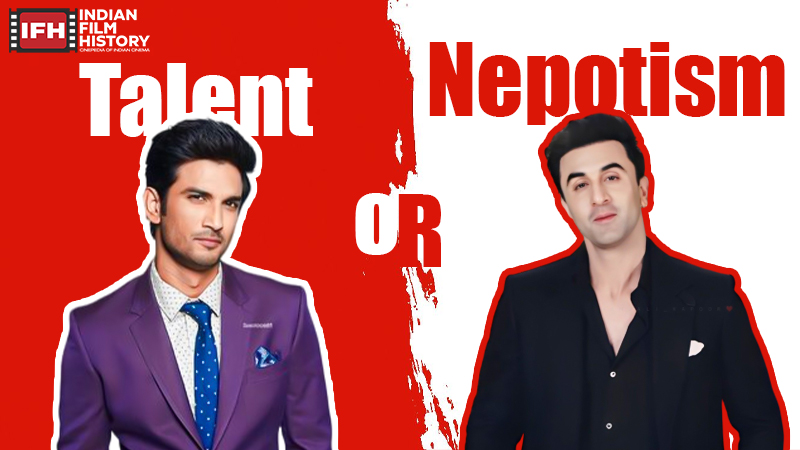Tollywood: the Telugu film industry has undergone a major transformation over the past two decades. Telugu cinema, once an underdog, now boasts massive budgets and wide theatrical releases. Stars like Prabhas, Mahesh Babu, and Allu Arjun have gained pan-Indian and global recognition, elevating the industry’s reputation and financial scale.

Not every big-budget film succeeds. Despite A-list stars and heavy marketing, films like Agnyaathavaasi and Radhe Shyam have struggled, failing to recoup even half their costs.
So, why does this occur? How does a ₹100 crore-plus film with a bankable star and a veteran director tank at the box office?

So, let’s explore these numerous factors instrumental behind this budget vs box office paradox in Tollywood.
The Flaw of Star Might
For years, Tollywood relied on star power, assuming certain actors could guarantee a film’s opening success. However, today’s audiences are more discerning, rejecting poorly made films despite the cast Box Office.
Consider Trivikram Srinivas’s 2018 film Agnathavasam, starring Pawan Kalyan, Keerthy Suresh, and Anu Emmanuel. The expectations were through the roof. While the film opened well due to a fan frenzy, negative word-of-mouth reviews after review stopped that momentum. With an estimated budget of ₹70 crores, the film grossed under ₹40 crores internationally Box Office. It wasn’t long until producers and distributors began to feel the effects of lost revenues.

Not even Mahesh Babu’s Brahmotsavam (2016), which followed a star-studded, multi-generational cast and family-friendly plotline, tanked miserably. Audiences complained that its flimsy screenplay and muddled emotional register were the biggest turn-offs.
2 Weak or Repetitive Script
This is maybe the number one reason big movies fail. In the rush for profits, script development sometimes takes a backseat to securing lucrative deals.
Acharya (2022) serves as a perfect illustration. With director Koratala Siva and stars Chiranjeevi and Ram Charan, the film should have had all the right ingredients for the story. The story was overly simplistic and predictable, the pacing was slow, and the characters were one-dimensional. Even with the father-son duo’s charm, the film had such a hard time resonating with audiences.

Likewise, Radhe Shyam (2022), featuring Prabhas and Pooja Hegde, was mesmerising to the eyes, but lacked a compelling story. Audiences didn’t buy into the astrology-based, fated-to-be romantic plotline. Even a budget of ₹300 crore couldn’t save it from turning into one of the most colossal disasters in the history of Indian cinema for that year Box Office.
Audiences today are smarter than ever. Thanks to OTT platforms and social media, they’re plugged into a global consciousness. No matter how big the budget or how over-the-top the costumes, special effects, and choreography, if the storytelling isn’t strong, the film fails.
Out of Control Paychecks and Budgetary Negligence
Yet one of the biggest contributors to Tollywood flops is this unsustainable cost structure.
The big stars in Tollywood today command ₹40 crore – ₹70 crore per movie. Directors like Rajamouli and Sukumar take a hefty salary, frequently with a profit-sharing arrangement. Marketing costs, lavish sets, expensive foreign shoots, and complex VFX drive up film costs to over ₹150 crore, even before the movie’s release Box Office.
Here’s the catch—only a small fraction of these movies even come close to earning money in theatres to warrant these spending levels.

When movies like Spy, Ghani, or Agent flop, then the loss is huge. Distributors lose their shirts, theatre owners cut down screen counts faster than you can say DOOMED, and actors’ brand equity can short-circuit. These films often fail to recover even their printing and advertising (P&A) costs.
This current model is not sustainable. Unless filmmakers reduce budgets to realistic levels, more films will incur losses, crossing into the unprofitable zone.
Gap Between Hope and Reality
Tollywood’s marketing budgets have inflated to outlandish extremes. Even just a few years ago, big films would start teasing a new movie with a short 10-second clip or teaser trailer a full 6 months before the movie premiered. There are invitation-only “pre-release” events featuring drone doomsday shows, huge stage productions, fan meet & greets and more. To lure viewers in, trailers are cut with epic movie score-type music and over-the-top narration to pump up the hype.
When the movie itself ends up buckling under this expectation, the fallout is savage.

Filmmakers Puri Jagannadh and Karan Johar envisioned Liger as a massive pan-India hit for Vijay Deverakonda, but the film was panned by critics and failed commercially across multiple languages.
Audiences weren’t going to have it, and the overhyping came back to haunt them in a big way.
Evolving Menu Choice and Demand
Today’s audiences are used to having easy options for Korean dramas, Hollywood blockbusters, indie films and a vast array of regional cinema — all at the press of a button. Thanks to platforms like Netflix, Prime Video, Hotstar, and Aha, access to this rich content is only a click away.
So what gets them to come out, purchase a ticket, and spend money on a theatre-going experience?
This is on top of a dwindling number of screens and a guaranteed short window for theatrical runs. Only those films that provide an unparalleled experience or a profoundly emotional high are going to break through. Those tried and true “mass hero introduction, comedy, item song, climax fight” formulas have gone out of style. Audiences don’t want it—you know, unless it’s really innovatively packaged.
Movies like Colour Photo and Middle-Class Melodies — low-cost productions which earned their audience through developing personal stories — broke through OTT and buzz. At the same time, bland, formulaic action films are failing to make an impact.

Disruptive Effect of OTT Platforms Box Office
The pandemic only sped up the trend toward OTT platforms. Movies that previously would receive 4–6 week exclusive windows of critical theatrical runs are now online in as little as 3–4 weeks.
This has fostered a dangerous new consumer inflexion point: “Why do I need to see this in the theatre when I can wait and watch it at home next month? Change to the above paragraph
Audiences are becoming increasingly demanding about better content. Storytelling standards have increased thanks to OTT originals like Guns & Gulaabs, Paatal Lok, and The Family Man. Most blockbuster films utterly fail to compete.
Unless you have unbelievable word-of-mouth hype, or breathtaking imagery specifically designed for ultra-wide screens (RRR, Pushpa), millions of would-be future viewers ignore theatrical releases.
Direct Result #1 – Inadequate Release Planning and Conflicts
Tollywood’s calendar is loaded. At times like Diwali, when the competition from big releases is at its highest, 2, 4 or even 7 films might be trying to cater to the same audience. This results in:
A more recent case in point would be Agent (2023), which fought in theatres against Dasara. While Dasara had an India-centric narrative and powerful performances, Agent was let down by weak writing and it failed to bounce back even with a big budget.
Producers usually target Sankranthi, Dasara or summer weekends; if the content doesn’t support it, no amount of prime timing can save the film.

Excessive Reliance on Formula Programs & Failure to Foster Innovation
Moreover, Tollywood has a particularly deep-rooted tradition of mass cinema, which really played well during the 2000s. The same formula — hero’s journey, revenge drama, comedy subplot, item girl — is starting to feel cliché and played out.
Take Pushpa: The Rise — it was successful in a mass template but introduced swadeshi spice: red sanders smuggling, desi aesthetics, and a different musical code. That particular innovation made a lot of sense in what we were trying to do.
At the same time, mass-yelling films like Ghani and NBK’s Ruler failed in their attempts to translate pre-2018 Chiranjeevi-style content into new-age packaging.
Audiences are always eager for new and innovative concepts. With each new iteration, they need to see something different from what has come before them. When they don’t, they kill the film, regardless of the budget amount.
Distributor Losses and Other Financial Ecosystem Collapse
When one of these expensive films misfires, it’s not only the producers who take the loss. Distributors and exhibitors — the people who pay upfront to screen the film, often bear the biggest losses.
In 2022-23, a long line of flops created a powder keg of frustration below the surface for distributors, as some threatened to sue producers or stars for their lacklustre performance. This has understandably eroded trust and affected willingness to invest in the future.
Before too long, disasters like Panjaa, Sardaar Gabbar Singh and Spyder sent distributors into ₹20–30 crore losses — crippling entire circuits and instilling a fear of God in the market for years to come on films coming soon after them.

Summary and next steps
Tollywood finds itself at a historic turn. The days of producing movies just for the fan base or just for the push-the-button to produce a guaranteed success. No, that day is done. To survive and thrive in this altered landscape, filmmakers must.
Studios must continue to take chances by working with young, bold filmmakers rather than going the easier, safer route. The triumph of films such as Jathi Ratnalu, DJ Tillu, and Baby — all slickly executed, modestly budgeted, content-driven — reaffirms the audience’s want for creativity over magnitude.
If Tollywood is able to adopt this change, it can make sure that massive films aren’t just grand in their presentation. They also score grandly.
When we tune into Instagram reels and OTT recommendations in 2025, the true stars of the new entertainment landscape will be the ones that force us to stop, think, laugh, cry,




Leave a Comment